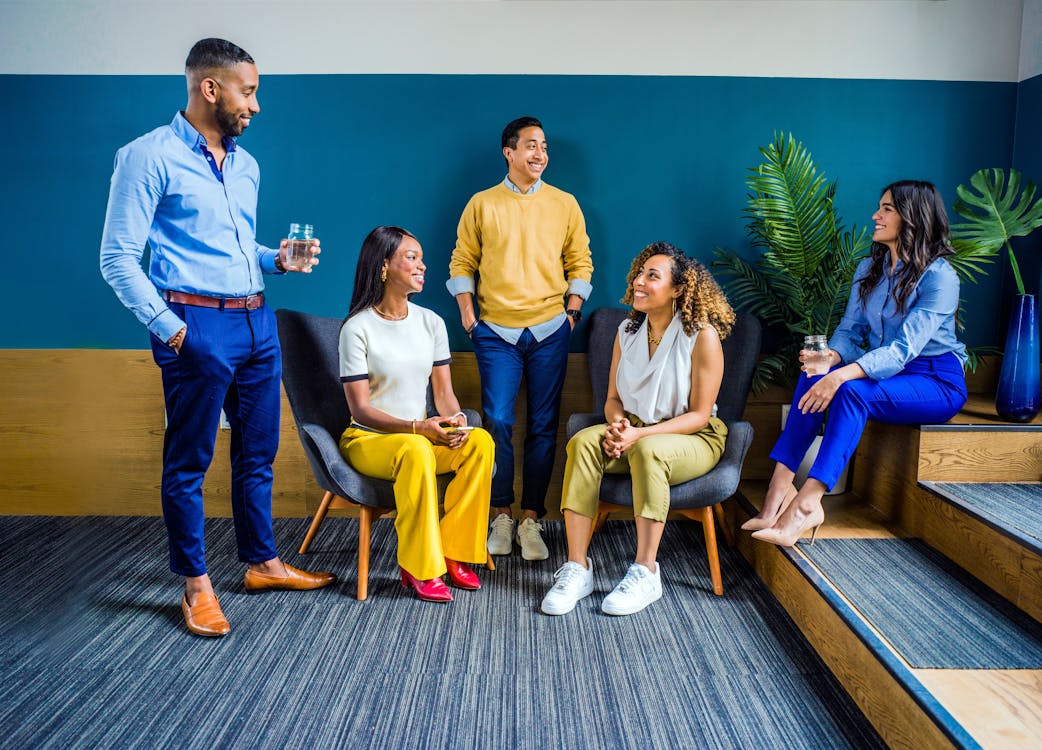Table of Contents
Addressing Discrimination: Teaching Tolerance – Building a More Inclusive World
Ever felt like an outsider? Or witnessed someone being treated unfairly simply because they were different? That uncomfortable knot in your stomach, that sense of injustice – it stems from something pervasive and damaging: discrimination. In a world brimming with diverse cultures, beliefs, and identities, the shadows of prejudice and bias still linger, causing pain and division. But what if we could actively build bridges instead of walls? What if we could equip ourselves, our children, and our communities with the tools to not just accept differences, but to truly understand and value them? This is where the vital work of teaching tolerance comes in – not as a passive nod to diversity, but as an active, ongoing commitment to fostering empathy, respect, and genuine inclusion.
Addressing discrimination isn’t just a ‘nice-to-have’; it’s a fundamental necessity for a healthy, thriving society. It requires conscious effort, open conversations, and a willingness to learn and grow. This article delves into the heart of discrimination, explores why teaching tolerance is more critical than ever, and provides practical strategies for individuals, educators, and communities to cultivate a more just and compassionate world. Let’s embark on this journey together, understanding the challenges and embracing the solutions.

Understanding Discrimination: The Root of the Problem
Before we can effectively address something, we need to understand it. Discrimination isn’t a monolithic concept; it wears many faces and operates on multiple levels, often subtly weaving itself into the fabric of our societies.
What is Discrimination?
At its core, discrimination is the unjust or prejudicial treatment of different categories of people, especially on the grounds of race, ethnicity, gender, sexual orientation, age, religion, disability, or other identity markers. It moves beyond simple prejudice (a preconceived opinion not based on reason or actual experience) into action – or inaction – that disadvantages certain groups.
- Direct Discrimination: Treating someone less favourably than others because of a protected characteristic (e.g., not hiring someone because of their race).
- Indirect Discrimination: When a rule, policy, or practice applies to everyone but disadvantages people with a particular protected characteristic (e.g., a height requirement that disproportionately excludes women or certain ethnic groups).
- Harassment: Unwanted conduct related to a protected characteristic that violates a person’s dignity or creates an intimidating, hostile, degrading, humiliating, or offensive environment.
- Systemic/Institutional Discrimination: Policies, practices, or procedures embedded within institutions (like schools, workplaces, or the justice system) that result in differential outcomes or disadvantages for certain groups, often unintentionally.
Discrimination can manifest based on numerous characteristics, including, but not limited to: race and ethnicity, gender identity and expression, sexual orientation, religion or belief, disability (physical or mental), age, socio-economic status, and nationality.
The Impact of Discrimination
The effects of discrimination are far-reaching and devastating, impacting individuals, communities, and society as a whole.
- Psychological Toll: Discrimination is linked to increased stress, anxiety, depression, trauma, low self-esteem, and even physical health problems due to chronic stress. It creates environments of fear and mistrust.
- Social Exclusion: It can lead to isolation, marginalization, and reduced participation in community life, education, and employment.
- Economic Disadvantage: Barriers in hiring, promotion, pay equity, access to housing, and quality education perpetuate cycles of poverty and limit opportunities for affected groups.
- Societal Division: Discrimination breeds conflict, erodes social cohesion, and prevents societies from benefiting from the full potential and contributions of all their members.
Ignoring discrimination allows these negative consequences to fester and grow, undermining the very foundations of a fair and equitable society.
Unconscious Bias: The Hidden Driver
Often, discrimination isn’t born from malicious intent but from something more subtle: unconscious bias (also known as implicit bias). These are social stereotypes about certain groups of people that individuals form outside their own conscious awareness. Everyone holds unconscious beliefs about various social and identity groups, and these biases stem from our tendency to organize social worlds by categorizing.
These hidden biases can influence our judgments, decisions, and behaviours without us even realizing it. In a hiring scenario, an unconscious bias might lead a manager to favour a candidate who shares their background, overlooking a more qualified candidate from a different group. In healthcare, it might lead to disparities in treatment based on race or gender. Recognizing and actively working to mitigate our own unconscious biases is a crucial step in dismantling discriminatory patterns.
Why Teaching Tolerance Matters More Than Ever
In an increasingly interconnected yet often polarized world, the need for tolerance, empathy, and understanding has never been more acute. Teaching tolerance goes beyond simply ‘putting up with’ differences; it’s about actively appreciating diversity, challenging prejudice, and building bridges of understanding.

Building Empathy and Understanding
Tolerance education fundamentally fosters empathy – the ability to understand and share the feelings of another. By learning about different cultures, perspectives, and life experiences, individuals can step outside their own bubbles and connect with the humanity in others. This understanding dismantles stereotypes and makes it harder to dehumanize or ‘other’ those who are different.
When we teach children (and adults) to ask “What might it feel like to be in their shoes?”, we cultivate a powerful tool against prejudice. Empathy allows us to see beyond labels and connect on a human level.
Fostering Inclusive Communities
Whether in schools, workplaces, or neighbourhoods, tolerance is the bedrock of genuinely inclusive communities. When people feel safe, respected, and valued regardless of their background, the entire community benefits. Inclusion leads to:
- Greater creativity and innovation (diverse perspectives).
- Improved problem-solving.
- Stronger social bonds and cooperation.
- Enhanced well-being for all members.
Teaching tolerance equips community members with the skills and attitudes needed to create and maintain these inclusive environments, where everyone feels they belong.
Countering Hate Speech and Extremism
The rise of online platforms has unfortunately amplified the reach of hate speech and extremist ideologies, which often target specific groups based on prejudice and misinformation. Tolerance education acts as a crucial antidote.
By promoting critical thinking, media literacy, and an understanding of the historical consequences of intolerance (like genocide and persecution), we can inoculate individuals against hateful narratives. Teaching tolerance empowers people to recognize, reject, and speak out against hate speech, rather than passively accepting or amplifying it.
Preparing Future Generations
Children are not born prejudiced; they learn it. By proactively teaching tolerance from a young age, we invest in a more just and peaceful future. We equip the next generation with the values and skills needed to navigate an increasingly diverse world constructively.
Schools play a pivotal role, but so do families and communities. Instilling values of respect, fairness, and curiosity about differences helps children grow into empathetic, open-minded adults who contribute positively to society.
Practical Strategies for Teaching Tolerance
Teaching tolerance isn’t about a single lesson plan; it’s an ongoing process woven into daily interactions, education systems, and community life. Here are practical strategies for different contexts:
Starting Early: Educating Children and Youth
- Age-Appropriate Conversations: Talk openly about differences and similarities in a way children can understand. Address their questions honestly and counter stereotypes they may encounter. Use simple terms like ‘fairness’ and ‘kindness’.
- Diverse Books and Media: Expose children to stories, characters, and images that reflect a wide range of cultures, families, abilities, and backgrounds. Ensure representation is authentic and positive.
- Teach Empathy Explicitly: Use role-playing, storytelling, and discussions about feelings to help children understand others’ perspectives. Ask questions like, “How do you think that made them feel?”
- Model Inclusive Language: Use people-first language (e.g., “person with a disability” instead of “disabled person”) and avoid generalizations or stereotypes.
- Address Teasing and Bullying: Intervene immediately when witnessing exclusion or prejudice-based bullying. Explain why such behaviour is hurtful and unacceptable.
- Celebrate Diversity: Incorporate multicultural themes and celebrations into learning and activities, focusing on understanding rather than just superficial aspects like food or costumes.
Role Modeling: Leading by Example
Children (and adults) learn by watching others. Parents, educators, leaders, and community members have a responsibility to model tolerant and inclusive behaviour.
- Examine Your Own Biases: Engage in self-reflection. Be aware of your own potential unconscious biases and actively work to counteract them.
- Show Respect for Everyone: Interact respectfully with people from all backgrounds, even those with whom you disagree.
- Challenge Prejudice When You See It: Don’t be a passive bystander. Speak up calmly but firmly against discriminatory jokes, comments, or actions.
- Build Diverse Relationships: Actively seek out friendships and interactions with people from different backgrounds than your own.
- Apologize When You Make Mistakes: If you say or do something biased or hurtful, acknowledge it, apologize sincerely, and learn from the experience.

Creating Safe Spaces for Dialogue
Meaningful change requires open and honest conversation, even when it’s uncomfortable. Creating safe spaces where people feel able to share their experiences and perspectives without fear of judgment is crucial.
- Establish Ground Rules: Set expectations for respectful listening, avoiding interruptions, speaking from personal experience (“I” statements), and maintaining confidentiality if appropriate.
- Practice Active Listening: Focus fully on the speaker, try to understand their perspective, and reflect back what you hear to ensure comprehension. Avoid formulating your rebuttal while they are still talking.
- Encourage Curiosity, Not Judgment: Frame questions genuinely seeking to understand, rather than to challenge or disprove someone’s experience.
- Acknowledge Discomfort: Talking about discrimination and bias can be uncomfortable. Acknowledge this discomfort and emphasize the importance of leaning into it for growth.
- Facilitate, Don’t Dominate: In group settings, ensure diverse voices are heard and prevent any single perspective from dominating the conversation.
Exposure to Diversity
Familiarity often breeds understanding and reduces fear of the unknown. Actively seeking out exposure to diverse cultures, ideas, and people is a powerful way to build tolerance.
- Intercultural Experiences: Participate in cultural festivals, visit different places of worship (respectfully), travel, or join clubs/groups with diverse memberships.
- Diverse Curricula: Advocate for and support educational curricula that accurately and inclusively represent the histories, contributions, and perspectives of diverse groups.
- Varied Media Consumption: Intentionally consume media (books, films, news, music) created by and featuring people from different backgrounds.
- Community Engagement: Volunteer or participate in community projects that bring together people from various walks of life.
Addressing Biases Head-On
Tolerance requires more than just good intentions; it requires actively identifying and challenging our own biases and the stereotypes prevalent in society.
- Take Implicit Bias Tests: Resources like Project Implicit offer online tests that can help reveal potential unconscious biases. Use the results as a starting point for reflection.
- Question Stereotypes: When you encounter a stereotype (in media, conversation, or your own thoughts), pause and question it. Where does it come from? Is it accurate? What harm might it cause?
- Seek Out Counter-Stereotypical Examples: Actively look for examples that challenge common stereotypes to broaden your understanding.
- Focus on Individuality: Make a conscious effort to see people as individuals, rather than just representatives of a group.
Actionable Steps for Individuals and Communities
Building a tolerant and inclusive society is a collective responsibility. Here are actionable steps everyone can take:
Educate Yourself Continuously
The learning never stops. Commit to ongoing education about different cultures, histories, social justice issues, and the experiences of marginalized groups.
- Read books and articles by diverse authors.
- Listen to podcasts and watch documentaries that explore different perspectives.
- Follow social justice advocates and organizations on social media (critically evaluating sources).
- Attend workshops or lectures on diversity, equity, and inclusion.
Speak Up Against Discrimination
Silence often implies complicity. Learn effective ways to intervene when you witness prejudice or discrimination (bystander intervention).
- Challenge discriminatory jokes or comments: “I don’t find that funny,” or “Can you explain what you mean by that?”
- Support the target: Offer support to the person being targeted, either publicly or privately.
- Report discrimination: If appropriate (e.g., in a workplace or school), report the incident through official channels.
- Educate others: Share what you’ve learned about bias and discrimination in a constructive way.
Support Anti-Discrimination Initiatives
Lend your voice, time, or resources to efforts aimed at promoting equality and fighting discrimination.
- Support organizations working on civil rights and social justice.
- Advocate for inclusive policies in your workplace, school, or community.
- Participate in peaceful protests or campaigns for equality.
- Vote for representatives who champion anti-discrimination legislation.
Promote Inclusive Language and Behavior
Be mindful of the language you use and the subtle messages your behaviour sends.
- Use inclusive and respectful terminology. Avoid assumptions about people’s identities (e.g., gender, relationships).
- Be aware of microaggressions (subtle, often unintentional comments or actions that express prejudice) and strive to avoid them.
- Ensure meetings, events, and social gatherings are welcoming and accessible to everyone.
Foster Diverse Friendships and Networks
Intentionally step outside your usual social circles and build genuine connections with people who have different backgrounds and experiences than you. This is one of the most powerful ways to break down barriers and build empathy organically.

Building Bridges, Not Walls: The Path Forward
Addressing discrimination and teaching tolerance are not simple tasks with easy fixes. They represent an ongoing journey, a continuous commitment to learning, unlearning, and actively building a better world. It requires courage to confront uncomfortable truths about ourselves and our societies. It demands empathy to connect with experiences different from our own. And it necessitates collective action to dismantle systemic barriers and challenge prejudice wherever it arises.
From the playground to the boardroom, from our homes to our houses of parliament, the principles of tolerance and inclusion must be championed. By understanding the roots of discrimination, recognizing the profound importance of empathy, and implementing practical strategies in our daily lives, we can chip away at the foundations of prejudice.
Let’s choose to be bridge builders. Let’s commit to educating ourselves and future generations, fostering safe spaces for dialogue, celebrating diversity, and speaking out against injustice. The path towards a truly tolerant and equitable world is paved with conscious effort, open hearts, and a shared belief in the inherent dignity and worth of every single person. It’s a journey worth taking, together.










